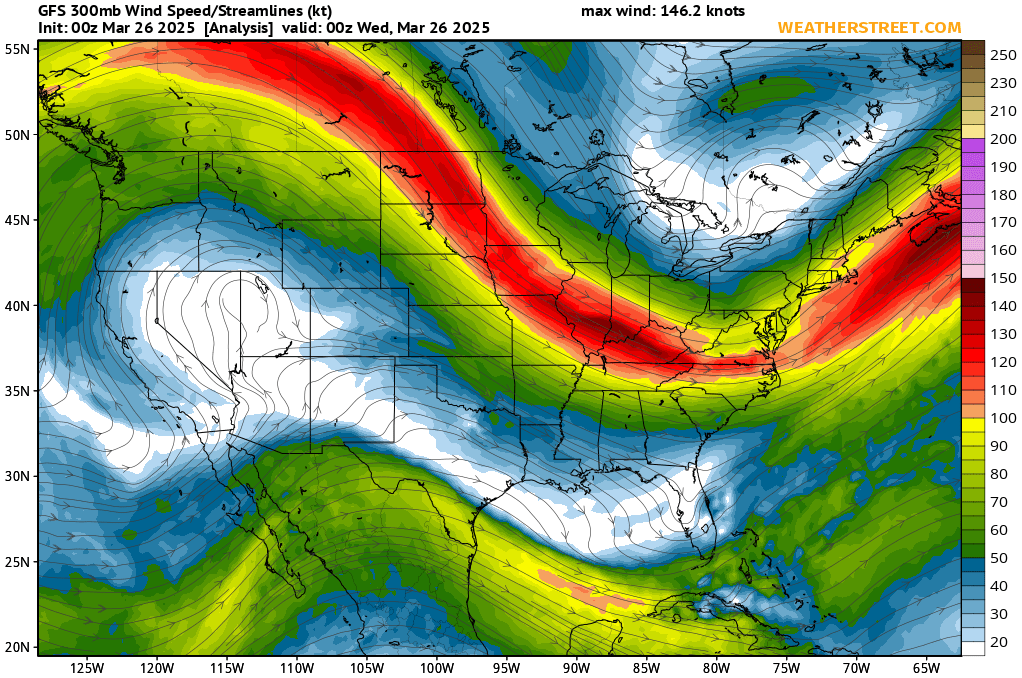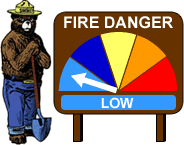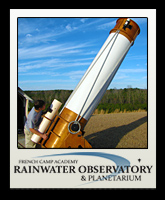Jet Stream Page
These are maps of the Jet Stream


What is the Jet Stream?
Short Answer: Jet streams are bands of strong wind that generally blow from west to east all across the globe. They impact weather, air travel and many other things that take place in our atmosphere.
Jet streams are narrow bands of strong wind that generally blow from west to east all across the globe. Earth has four primary jet streams: two polar jet streams, near the north and south poles, and two subtropical jet streams closer to the equator.
What Causes Jet Streams?
Jet streams form when warm air masses meet cold air masses in the atmosphere.
The Sun doesn’t heat the whole Earth evenly. That’s why areas near the equator are hot and areas near the poles are cold.
So when Earth’s warmer air masses meet cooler air masses, the warmer air rises up higher in the atmosphere while cooler air sinks down to replace the warm air. This movement creates an air current, or wind. A jet stream is a type of air current that forms high in the atmosphere.
On average, jet streams move at about 110 miles per hour. But dramatic temperature differences between the warm and cool air masses can cause jet streams to move at much higher speeds — 250 miles per hour or faster. Speeds this high usually happen in polar jet streams in the winter time.
How Do Jet Streams Affect Air Travel?
The jet stream exists in the mid to upper troposphere — the layer of Earth’s atmosphere where we live and breathe. Airplanes can fly in the jet stream. When they’re both headed in the same direction, airplanes can get a boost in speed from this fast moving air current. Credit: NASA/JPL-Caltech
Jet streams are located about five to nine miles above Earth’s surface in the mid to upper troposphere — the layer of Earth’s atmosphere where we live and breathe.
Airplanes also fly in the mid to upper troposphere. So, if an airplane flies in a powerful jet stream and they are traveling in the same direction, the airplane can get a boost. That’s why an airplane flying a route from west to east can generally make the trip faster than an airplane traveling the same route east to west.
How Do Jet Streams Affect Weather?
The fast-moving air currents in a jet stream can transport weather systems across the United States, affecting temperature and precipitation. However, if a weather system is far away from a jet stream, it might stay in one place, causing heat waves or floods.
Earth’s four primary jet streams only travel from west to east. Jet streams typically move storms and other weather systems from west to east. However, jet streams can move in different ways, creating bulges of winds to the north and south.
How Does the Jet Stream Help Us Predict the Weather?
Weather satellites, such as the Geostationary Operational Environmental Satellites-R Series GOES-R, use infrared radiation to detect water vapor in the atmosphere. With this technology, meteorologists can detect the location of the jet streams.
Monitoring jet streams can help meteorologists determine where weather systems will move next. But jet streams are also a bit unpredictable. Their paths can change, taking storms in unexpected directions. So satellites like GOES-16 can give up-to-the-minute reports on where those jet streams are in the atmosphere — and where weather systems might be moving next.



 Mt Washington Wx CAM
Mt Washington Wx CAM





